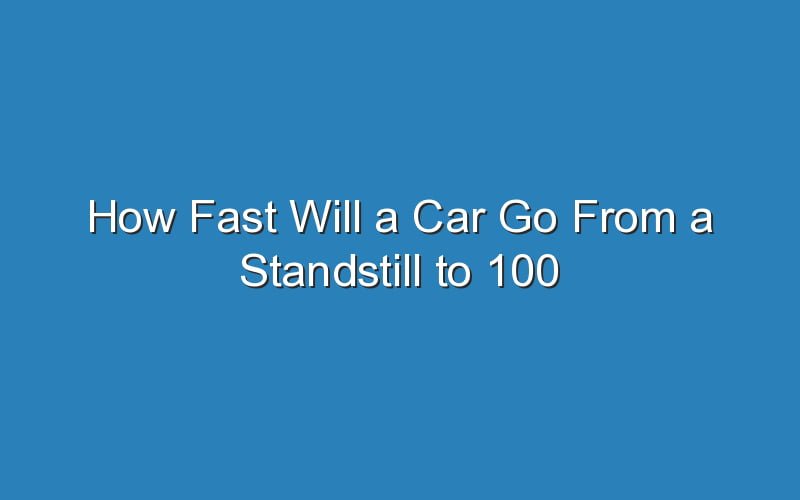The question, “How fast will a car go from a standstill to 100 km/h?” is an important one. It is essential to understand the relationship between the initial velocity and final velocity, as well as the acceleration of the vehicle due to gravity. Understanding the relation between the two is essential for calculating the speed of a car. The first equation of motion is the foundation for determining the initial and final speeds of a car.
The slope-intercept form of the equation is y = m + b. Let’s assume that the car’s initial velocity is 12 m/s. Then, if it accelerates at 100 km/h, its acceleration will be constant. Therefore, it will take six seconds for a car to reach 100 km/h. This equation of motion can be represented by a car at rest and at a speed of 10 m/s.
The acceleration of a car at 100 km/h is constant. The difference between the initial and final velocities is only small. Thus, the time needed for the car to catch the gazelle depends on the initial distance between the two cars. The velocities of both cars are the same and the final distance is equal to the initial distance. The cheetah starts his chase from a bush and spots the gazelle running at 10 m/s. After noticing the gazelle, it accelerates from rest at four m/s2. Then, it has to solve the kinematic equations of the movement.
The time required for the car to catch the second car is dependent on the initial distance from the first one. The final distance is derived from the initial velocity and the acceleration of the second car. A cheetah is hiding in a bush and sees a gazelle running at 10 m/s. It then accelerates at 4 m/s2 and catches it. It must determine the displacement of the gazelle to capture it.
In addition to the initial velocity, the final velocity is a function of the car’s speed. The car is going to accelerate and then slow down to catch the second. A constant acceleration of a car is the same as a constant acceleration. However, a constant displacement is more complex. Its initial velocity is less than the initial velocity. Its final velocity increases. So, how much time will the cheetah catch the second?
A car has an initial velocity of 12 meters/s. At the start of the timing, the car’s initial velocity is 14 meters/s. At the end of the six-second time period, the car’s velocity is 13 m/s. A constant acceleration of a car is zero. The acceleration of a car is the result of a force, not the other way around. A cheetah is moving in the direction of the gazelle.
In the previous paragraphs, we’ve mentioned that the initial velocity of a car depends on the initial distance between the cars. A car at an angular rate is at a constant rate of acceleration. A car that is stationary will experience the same acceleration as a moving car. A constant velocity is the same as the initial velocity. This means that a car with an early velocity has an initial velocity of 12.
An initial velocity is the vehicle’s initial velocity. The initial velocity of a car is the speed at which the vehicle will accelerate. Consequently, the acceleration of a car at a later time is the same as the initial velocity. In this example, the car accelerates from a standstill at the same rate as the gazelle. Once the cheetah sees the gazelle, it runs away to the bush. A cheetah has an initial velocity of 12 m/s and an absolute velocity of four m/s2.
The initial velocity of a car is 14 meters per second. Its final velocity is the same as the initial velocity. The two velocities of a car must be equal or opposite. When the initial velocity and the final value are identical, the two cars’ respective speeds will be the same. It’s crucial to consider the distance between the cars when the initial and the final velocities are similar.

